Text
DON'T BE A BULLY
The terrible reality of social media usage is that users may encounter harassment or abuse from other users, some of whom they may or may not know personally. I think this stems from the fact that people are more mean and confrontational online because they're hiding behind a screen and there are no real repercussions to whatever they may say even though platforms are trying to monitor and reduce online harassment.

Online harassment can take many different forms, including doxing, revenge porn and humiliation (Marwick & Caplan 2018, p. 544). Women, particularly queer and women of colour, experience harassment more frequently than other genders and may even accept it as a standard aspect of using social media (Marwick & Caplan 2018, p. 545). In Australia, 65% of young women aged 15-25 have been exposed to a spectrum of online violence, compared to the global figure of 58% (Thompson 2023).
Mainstream UK media outlets have labelled young people as 'snowflakes' to mock their perceived over-sensitivity online. Haslop et al (2021) challenged this and found that is wasn't that young people are easily offended by abusive and offensive online communications but rather it has become so normalised that they are willing to tolerate it rather than take action to address it because of how prevalent it is. Instead of being a bad and unsafe experience for people, social media should be a space where they can freely express themselves.
The Conversation (2023) describes the 'manosphere' as an "overlapping collection of online men's support communities" that has made men around the world suddenly adopt really aggressive, misogynistic views. Well, we can all point our fingers at influencers like Andrew Tate, Jordan Peterson and Elliott Hulse who have tried to "reassert a romantic masculine aesthetic" by advertising life coaching, gym supplements and self-help courses (Rich & Bujalka 2023). Their followers are thrown into an echo chamber of anti-feminism and feedback loops of tension and hysteria, where they will ridicule and insult anyone that isn't willing to 'believe'.
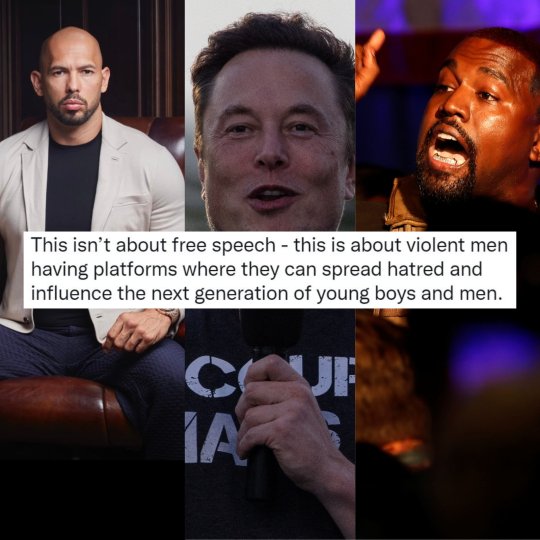
References-
Haslop, C, O'Rourke, F & Southern, R 2021, '#NoSnowflake: the toleration of harassment and an emergent gender-related digital divide, in a UK student online culture', Convergence, vol. 27, no. 5, pp. 418-48
Marwick, AE & Caplan, R 2018, 'Drinking male tears: language, the manosphere, and networked harassment', Feminist Media Studies, vol. 18, no. 4, pp. 542-559
Rich, B & Bujalka, E 2023, The draw of the 'manosphere': understanding Andrew Tate's appeal to lost men, The Conversation, viewed 9 May 2023, <https://theconversation.com/the-draw-of-the-manosphere-understanding-andrew-tates-appeal-to-lost-men-199179>
Thompson, J 2023, 'New Journalism research will help mitigate the harms of online hostility', Media Release, ANU, viewed 9 May 2023, <https://freilich.anu.edu.au/news-events/blog/new-journalism-research-will-help-mitigate-harms-online-hostility>
0 notes
Text
Indie Games and Twitch-ing
Social gaming is a phenomenon that has gained significant attention and popularity in recent years, especially since previously you had to be together physically to play with or against friends. Today you can play with anyone and everyone around the world.
The 'Untitled Goose Game' is an indie puzzle stealth game created in Melbourne by House House. It has received a lot of positive reviews from around the world. Compared to bigger, major studios which choose to concentrate on their games as financially successful goods, the Melbourne indie game sector as a whole strive to be more "ethically considerate and inclusive" (Keogh 2021, p. 219). Keogh (2021) further explores the different value regimes that shape the Melbourne indie game scene and highlights the collaborative nature of indie game development. It emphasises the role of social networks, cooperation, and supportive communities in the creation and success of indie games.
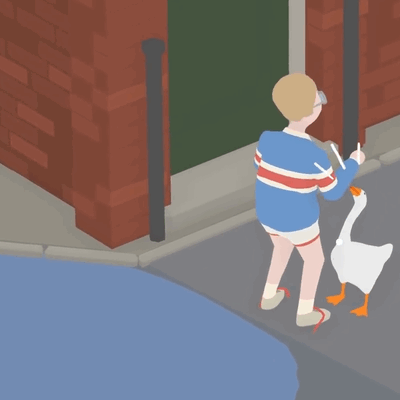
Online spaces like Twitch and Discord allow gamers to interact with each other, not only in the online gaming world but also in real life whether it's through chat or audio. Anyone can livestream oneself playing different video games on Twitch, and users can watch, comment on and donate to the livestreams of others. Streaming is a source of income for some, some are professional esports players and play against each other and some are just there for entertainment for viewers. These videos are often filmed within the confines of their homes and bedrooms show how gaming has changed from being a personal and private activity to a public form (Taylor 2018, p. 4).
References-
Keogh, B 2021, 'The Melbourne indie game scenes: value regimes in localised game development', in P Ruffino (ed) Independent Videogames: Cultures, Networks, Techniques and Politics, Routledge, pp. 209-222
Taylor, TL 2018, 'Broadcasting ourselves' (chapter 1), Watch Me Play: Twitch and the Rise of Game Live Streaming, Princeton University Press, pp. 1-23
0 notes
Text
#snapchatdysmorphia
Snapchat released Lenses in 2015 which began with goofy filters of dog ears and flower crowns but it has since introduced a way to see a different you with a slimmer nose, larger eyes or lips and a sharper jawline (Barker 2020, p. 207). These beautifying filters have since spread to every other social media platform. They have sparked controversy because the 'pretty' filter doesn't add anything new to your face, it just changes your features to fit the heteronormative standard of 'pretty' which is obviously very damaging to one's self-esteem. These filters produce unrealistic and skewed social expectations of women's bodies, which are impossible to naturally achieve in the first place (Coy-Dibley 2016). This has limited the ways people can authentically show themselves online. It has also promoted the homogenous standards of feminine beauty that are created for a male and Western-dominated society, rolling back on any diversity that had previously been developed (Coy-Dibley 2016). Crawford (2023) discusses how filters have used people of colour's features as trends. She says that it's frustrating that the "exact features [she] sought to change growing up are features that white women appropriate now". Filters would make her nose and jaw smaller but make her lips bigger which she used to be made of fun for but the rise of lip filler has increasingly grown popular among white women. She worries that these Eurocentric beauty standards are going to make young girls of colour grow up insecure because of these filters as well as the lack of media representation already.

With a simple touch, users can "correct" (Barker 2020, p. 208)their faces and have been taking these new faces to cosmetic surgeons. Once upon a time patients would bring magazine covers to get procedures to look like the hottest celebrity at the time but they are now seeking consultations to "look like the filtered versions of themselves" (Rajanala, Maymone & Vashi 2018). This has been named 'Snapchat Dysmorphia' after multiple plastic surgeons had observed many clients "losing perspectives on what [they] actually look like" due to Snapchat and Instagram filters (Brucculieri 2018)
References-
Barker, J 2020, 'Making-up on mobile: The pretty filters and ugly implications of Snapchat', Fashion Style & Popular Culture,vol. 7, no. 1&2, pp. 207-221
Brucculieri, J 2018, 'Snapchat dysmorphia' points to a troubling new trend in plastic surgery, Huffington Post, viewed 26 April 2023, <https://www.huffpost.com/entry/snapchat-dysmorphia_n_5a8d8168e4b0273053a680f6>
Coy-Dibley, I 2016, '"Digitised dysmorphia" of the female body: the re/disfigurement of the image', Palgrave Communications, pp. 1-9
Crawford, S 2023, Opinion: Snapchat filters are pushing Eurocentric beauty standards for women of colour, Technician Online, viewed 26 April 2023, <https://www.technicianonline.com/opinion/opinion-snapchat-filters-are-pushing-eurocentric-beauty-standards-for-women-of-color/article_a106fdb2-9c5d-11ed-9c19-33b068f66dfe.html>
Rajanala, S, Maymone, MBC & Vashi NA 2018, 'Selfies - Living in the era of filtered photographs', JAMA facial plastic surgery, vol. 20, no. 6, American Medical Association, United States, pp. 443-444
0 notes
Text
BODY MODIFICATION AND PORN CHIC
Body modification has become a popular trend on social media platforms, its not only individuals sharing their tattoos and piercing to share self-identity but its also plastic surgery and procedures that alter ones body shape. Microcelebrities and influencers that are not disclosing body modification on their social media pages are setting up women to think they have to achieve these unattainable beauty standards.
Tiktoker and OnlyFans creator Mikaela Testa is a common example of influencers being transparent about their cosmetic procedures. She has admitted to fillers and botox in her face and how she dissolved them once she felt more comfortable with herself. However, she has frequently backtracked on body modification surgeries like the Brazilian butt lift which has angered her followers and made them lose trust in her simply because she won't be transparent (Prajwal 2022). This has led lots of young women to self-esteem issues, thinking that they naturally have to have the curves of Mikaela Testa when it's just not naturally possible.

Drenten et al. (2018) discusses how Instagram has become a significant space for influencers to engage in sexualised self-presentation in order to gain fame and monetise their online presence. They argue that this phenomenon is influenced by the pornographic aesthetic prevalent in contemporary culture, often referred to as "porn chic". By objectifying one's sexualised self, through poses and highlighting certain body parts such as the lips or breasts, this helps gain the attention of users which leads to a higher following or more clicks, and thus profitable commercial success. Social media users, particularly on Instagram are unknowingly engaging in unpaid labour and engaging in personal marketing to help influencers develop their brand and compete visibility which is synonymous with obtaining status and influence (Marwick 2013).

Dorfman et al.'s study into plastic surgery-related hashtags on Instagram found that a more than 1million posts used 21 different hashtags related to plastic surgery. This shows that not only are there influencer and microcelebrities out there not disclosing their cosmetic procedures, there are plenty more other people that are showing off what they have had done, normalising modifying one's body for vanity.
References-
Duffy BE and Meisner, C 2022. “Platform governance at the margins: Social media creators’ experiences with algorithmic (in)visibility,” Media, Culture & Society, vol. 45, no. 2, pp. 285-304
Marwick, A.E 2013, Status Update: celebrity, publicity, and branding in the social media age, Yale University Press, New Haven
Prajwal, P 2022, OnlyFans Star Mikaela Testa goes back and forth on plastic surgery claims, HollywoodMask, viewed 10 April 2023, <https://hollywoodmask.com/p/mikaela-testa-plastic-surgery.html>
5 notes
·
View notes
Text
WE <3 SLOW FASHION
The fashion industry is one of the most harmful impacts on our environment from child labour, cheap exports and viscous trend cycles. These issues can be connected to the high demand of new designs from consumers that more and more collections are released each year. Around 20 years ago, the fashion industry would only turn out two collections a year, for autumn/winter and summer/spring, but now to keep up with the ever changing trends, release 50-100 mini collections per year (Domingos, Vale &Faria 2022).
In contrast to the harmful impacts of fast fashion, slow fashion has been introduced to mitigate some of these harmful processes. The slow fashion movement represents the need to invest in more durable products and timeless designs in order to transform the values of the fashion industry and adopt more sustainable methods. The movement pushes companies to adopt a business model that prioritises quality over quantity and based on slower manufacturing, ethical attitudes and durable well-made products (Domingos, Vale & Faria 2022). By providing workers with safe and just working conditions, including fair wages, manufacturers can also improve economic aspects of the process (Zhen et al. 2017, p. 83).

The slow fashion movement relates to digital citizenship, with the idea of respecting each other in online spaces and acting responsibility relates to the movement's respect for sweat shop workers and the concept of sustainability. There are a number of influencers that rave about sustainable fashion and educate viewers about things such as finding local brands and how to get involved in fashion and environmental activism. Venetia Le Manna is a "former fast fashion addict turned fair fashion campaigner" who uses her digital platform to call out big companies for over-production and exploitation of their workers. Being a good corporate citizen can be achieved by committing to sustainable fashion, but it can also be extended to being a good digital citizen by acting responsibly online when deciding where your next clothing purchase will be. Once upon a time you were only able to buy second hand clothing if you scoured all your local op shops for hours but nowadays, apps like Depop and Poshmark are available to almost everyone. Facebook Marketplace and Instagram reselling pages are also accessible for branded garments.
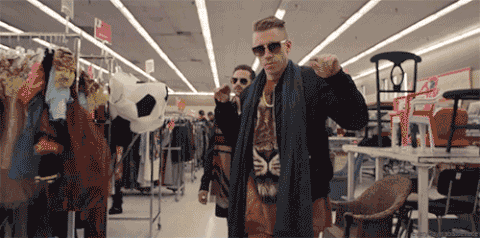
I personally buy almost all of my clothes second hand because I love a good bargain. Brands like Princess Polly or Cotton On have ridiculous prices for their basics that I can find at the op shop for half the price. I also don't really like searching through racks of clothing at the op shop because it can get overwhelming so I frequent a women's clothing market in Williamstown that's held every few months. I love that it has a wide range of sellers with different senses of style so I can find a lot of unique pieces for really good prices. Also buying a second hand item holds some sentimental value because I know it's from years or seasons ago, I'll never be able to find it again. I will keep some garments for literally forever if I can. I've had the same Supre black singlet I bought off of a Facebook group for 5+ years and it has not a single hole! And because my favourite clothing market is every few months it’s the only time I'll buy new clothes but sometimes I won't buy anything because nothing catches my eye. However, the last market I went to I found a brand new North Face jacket for $30! The seller just wanted to get rid of it because her daughter didn't want it even after they brought it home from overseas. Similarly, a lot of second hand sellers at markets or on Facebook just want to get rid of clothes that take up space, like the saying "one man's trash is another man's treasure".
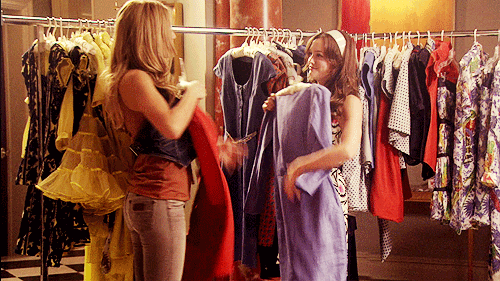
References
Domingos, M, Teixeira Vale, V & Faria, S 2022, 'Slow fashion consumer behaviour: a literature review', Sustainability, vol. 14, no. 5
Zhen, L, Henninger, C.E & Alevizou, P.J 2017, 'An Explanation of Consumers' Perceptions Towards Sustainable Fashion - A Qualitative Study in the UK', Sustainability in Fashion A Cradle to Upcycle Approach, Palgrave
0 notes
Text
BE A GOOD DIGITAL CITIZEN
According to the Council of Europe, a digital citizen is someone who can participate actively, positively, and responsibly in both online and offline communities, whether they be local, national, or international (2022).
Participatory democracy is listed as a desired result of digital citizenship according to Choi & Cristol (2021). Daily “expressive participation and personalized politics” are the means by which participatory culture is realized. According to this concept, participatory democracy on social media calls on users to publish their political action intentions and to voice their own views.
Social media has made it easier than ever for users to share experiences with others. This interpersonal connection helps groups of activists to come together around a shared political objective. Internet activist groups emerge with the political power to bring about change via collective action (Choi & Cristol 2021). It is stated that the existence of online activists networks is crucial for the realization of a participatory democracy.

Hashtags are common ground for most digital activism movements, such as #auspol, #blm, and #MeToo. Hashtag public’s are useful for facilitating connections over the Internet, encourage discussions and observation. #Auspol is Australia’s most popular and active hashtags, being short for Australian politics (Enli 2017). According to Axel Bruns, media and communication professor, the hashtag generates around 9,000 tweets a day throughout the year (Bogle 2016). This demonstrates how much digital citizenship can influence politics, as it opens up so much discussion on platforms where everyone can speak their mind, especially Twitter. Sometimes users aren’t good digital citizens and that make these spaces potentially dangerous, targeting marginalized groups and minorities. #Auspol has been recommended to only be active on at your own risk because Twitter has yet to monitor harassment and the very-present abuse and sexism (Bogle 2016).
In conclusion, in a world where public spheres are reaching digital media and more sensitive discussion are taking place, it’s more important than ever to be a good digital citizen to create safe and engaging spaces for everyone online.
References-
Bogle, A 2016, #auspol: the Twitter hashtag Australia can’t live without, Mashable, <https://mashable.com/article/twitter-australia-auspol#4tvfXtsZUEqV>
Council of Europe 2022, Digital citizenship education handbook, Strasbourg, France
Enli, G 2017, Twitter as an arena for the authentic outsider: Exploring the social media campaigns of Trump and Clinton in the 2016 presidential election, European Journal of Communication, vol. 32, no. 1, pp. 50-61
Vromen, A 2017, Digital citizenship and political engagement the challenge from online campaigning and advocacy organisations: Introduction, Palgrave Macmillan, London
0 notes
Text
REALITY TV AND ITS DIGITAL COMMUNITY
Reality TV is a genre that generates a lot of online discussion, where viewers can group together to form communities and critique the shows by authenticity and politically. This talk isn't only generated in homes but it also reaches the online domain, in comments, blogs, vlogs and social media (Deller 2019 p. 153).
It is statistically proven that television shows with a strong social media presence perform better in ratings counts than those without (Holt 2017).
Live discussions while the show is being broadcast can be exciting and intoxicating. This is particularly for shows that implement some form of online voting, eliciting a sense of 'liveness'. (Deller 2019, p. 154 ). Twitter is a common platform for these discussions and can hype up the liveness with hashtags that can be advertised throughout broadcast. These live tweets can be extended on the shows social media accounts that offer live Q&As immediately after broadcast to keep the discussion going. A lot of the time, live tweeting online makes sense to those staying engaged during the broadcast but those who might miss the discussion can tune into recap blogs or podcasts. They are often so thorough that people engage with these rather than watching the actual show either to save time or avoid spoilers.
Love Island is an example of this paradigm, in which they utilise the role of the viewer and their access to social media to further their relationship with participatory culture. They take advantage of these new media consumption trends for financial gain by focusing on viewers who intend to use social media and television at the same time to consume the show's content (L'Hoiry 2019). The audience is invited to vote on a number of topics, some critical and some not. At the end of the show, they are again tasked in voting for the winning couple from whoever has made it to the end of the season. The build-up to this big event would be 8 weeks coming so a lot of discourse is generated around the show, particularly even more in the final episodes where a winning couple will eventually be congratulated.

As Graham and Harju's (2011) findings showed that political discourse was a common component in these reality TV public spheres. The issues, behaviours, statements, discussions, lifestyles and images of these series triggered political discussions among forums, often driven by the audiences' lifestyles and personal narratives. By connecting their knowledge, identities, and experiences to society, this produced venues where engaged audiences became 'deliberative publics' (p. 27). Love Island's content may not explicitly discuss politics and deeper topics such as racism, sexuality and body image but it does reach the viewers and the Love Island discussion forums. Fans and contestants of colour have recognised that they are usually chosen last in the coupling process, male or female, since 2016 (Lupupa 2022).
This goes to show that although reality TV seems boring and mindless, it elicits discussion around important topics from it viewers. It holds great influence and ability to generate relevant discussions.
References-
Deller, R A 2019, Reality TV: the TV phenomenon that changed the world: reality TV in the world of social media, Emerald Publishing, Ebook Central, pp. 153-154
Holt, C 2017, Tweet along: analysing the relationship between social media and television ratings, OpenSIUC , p. 14
Graham, T, Harjum A 2011, Reality TV as a trigger of everyday political talk in the net-based public sphere, European Journal of Communication, vol. 26, no. 1, SAGE Publications, London, pp. 18-32
L'Hoiry, X 2019, Love Island, social media and sousveillance: new pathways of challenging realism in reality TV, Frontiers of Sociology
Lupupa, J 2022, 'You geniuinely have to work twice as hard': Dami Hope talks racism on Love Island, Evening Standard, viewed 20 March 2023, <https://www.standard.co.uk/showbiz/you-genuinely-have-to-work-twice-as-hard-dami-hope-talks-racism-on-love-island-b1022186.html>
0 notes
Text
TUMBLR AS A PUBLIC SPHERE
Social media platforms create virtual spaces where individuals from all across the world can gather and discuss shared interests. Tumblr is a site that makes building these digital communities even simpler. It provides anonymity for users who use alias usernames and profiles, allowing marginalised individuals to feel safe on a platform where they can share all their uncensored thoughts with like-minded people. Although I've never been a big user of Tumblr, I know that it is a safe space for people who may not want to attach their name to their posts and can post without fear of judgement because essentially no one on the site knows who you are. Tumblr is a prevalent platform for teenagers whose conversations focus on "jokes, art and sex" (Reeve 2916). They tell their most personal stories on there to people all around the globe but feel more comfortable doing so than posting on their Facebook page to their friends and family.
Hashtagging is popular on Tumblr for connecting individuals to digital communities and their specific gifs, videos, blog posts, and videos. Hashtags don't depend on users or the number of followers they have so they reach more people through participation in the community and with the relevant hashtags. They are also used for activism and bring awareness to real life issues. An example of this would be #bodypositive which represented a safe space for people who didn't fit the heteronormative definition of feminine beauty; "young, white and slim" (Cwaynar-Horta 2016). The hashtag was an empowering movement of self-love and affirmation that was directly opposite of the energy on Instagram or Facebook where women were slut-shamed for posting "sexually suggestive pictures" (Miguel 2016). Tumblr was very open to 'not safe for work' content until 2018, which allowed the #bodypositive movement to be so successful because images weren't being taken down for nudity and allowed women to be "emotionally authentic" (Reif, Miller & Taddicken 2022 p. 17).
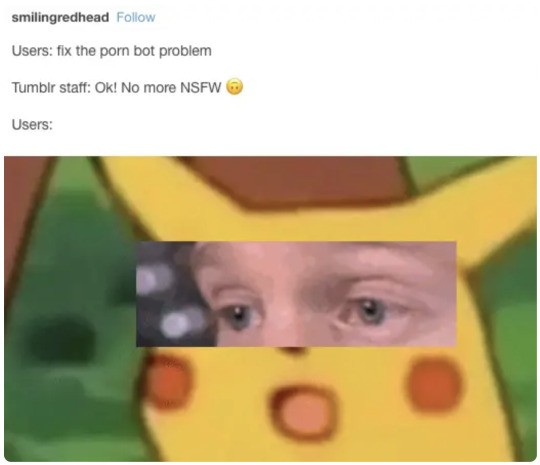
References-
Cwaynar-Horta, J 2016, The commodification of the body positive movement on Instagram, Stream: Interdisciplinary Journal of Communication, vol. 8, no. 2, pp. 26-56
Reeve, E 2016, The secret lives of Tumblr teens, New Republic, <https://newrepublic.com/article/129002/secret-lives-tumblr-teens>
Reif, A, Miller, I & Taddicken, M 2022, "Love the skin you're in": an analysis of women's self-presentation and user reactions to selfies using the Tumblr hashtag #bodypositive, Mass Communication and Society
1 note
·
View note